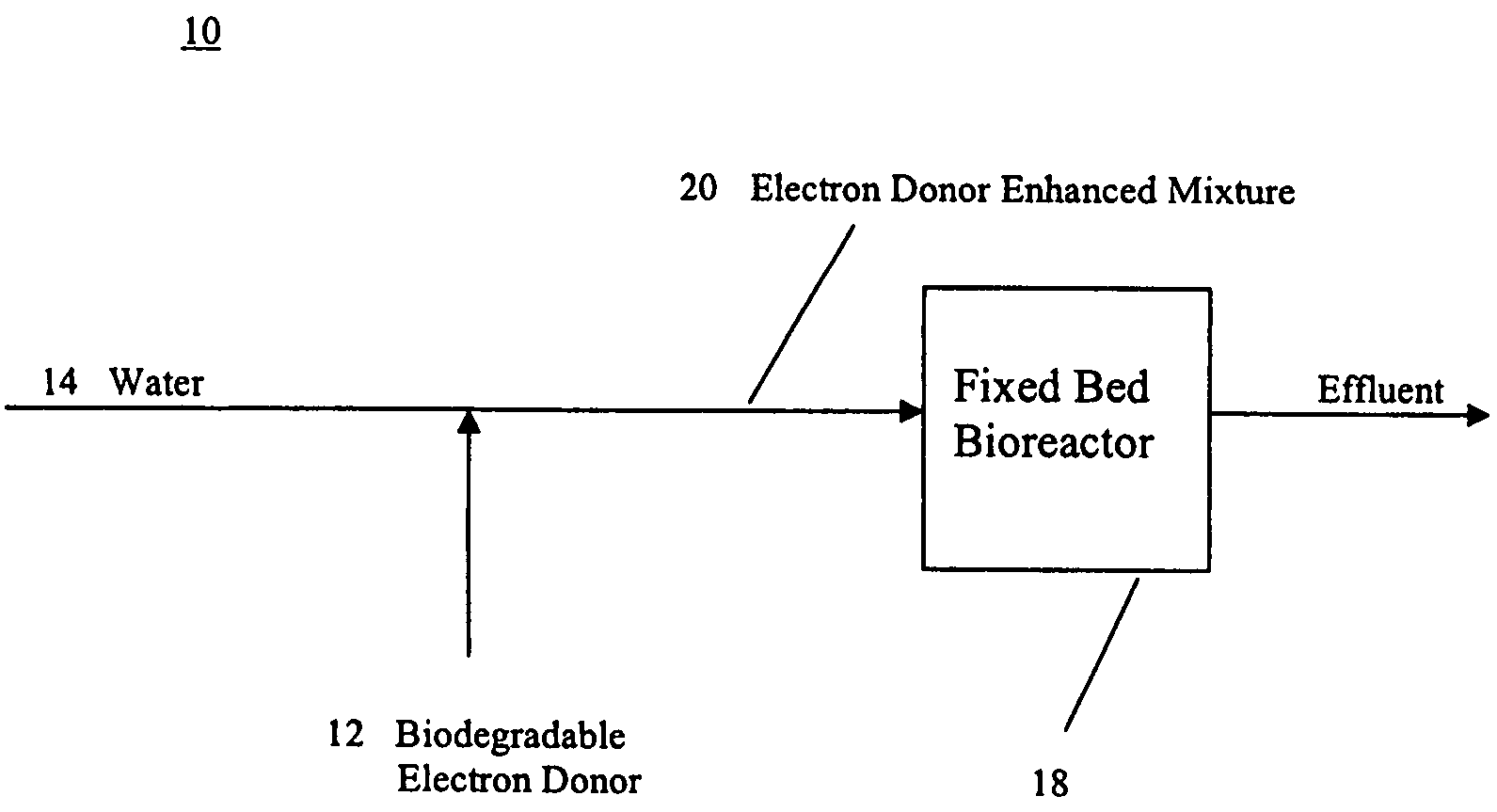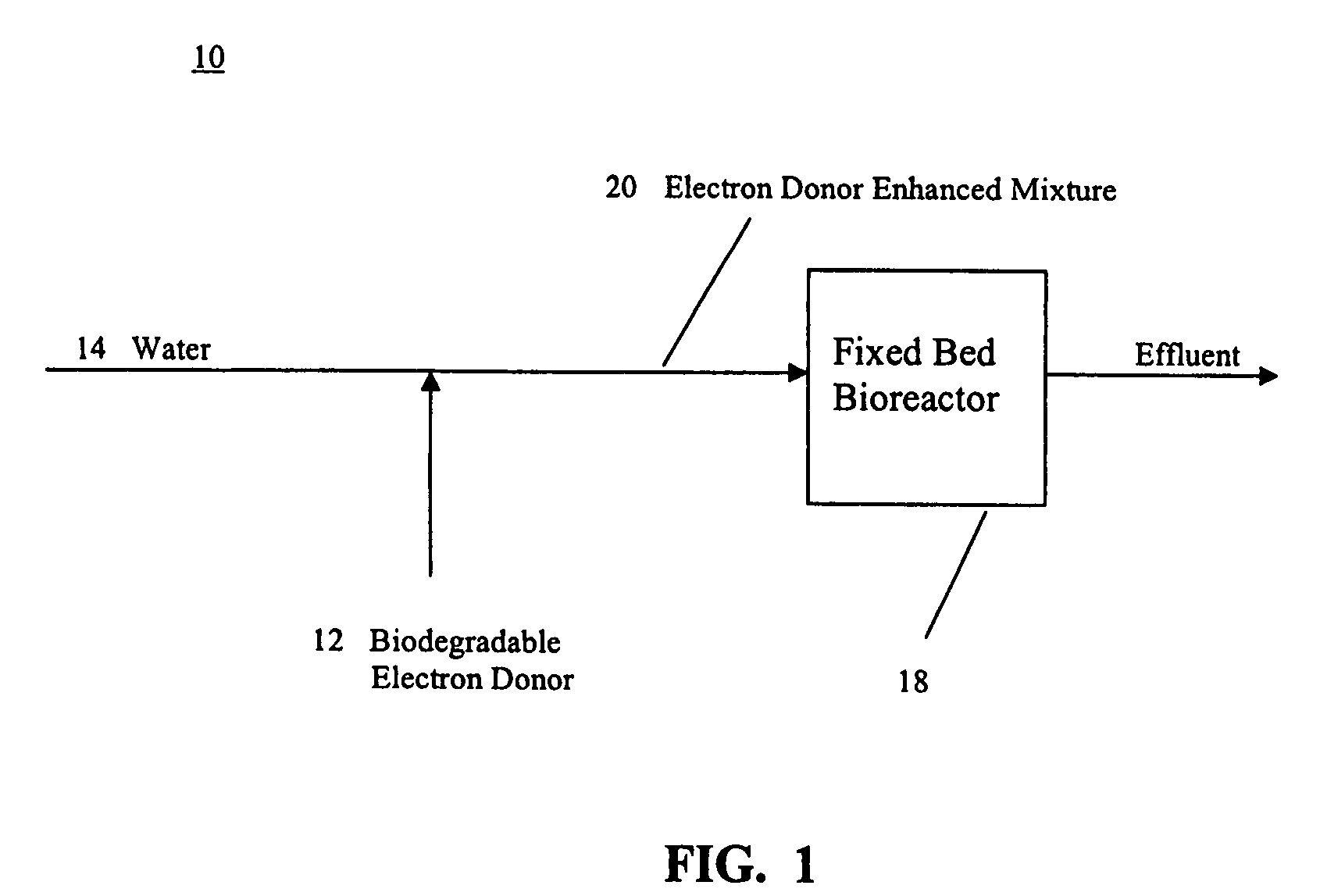Process for treatment of organic contaminated water
a technology for organic contamination and water treatment, applied in water treatment compounds, sustainable biological treatment, biological water/sewage treatment, etc., can solve the problems of objectionable taste and odor compounds in surface water supplies, increase the problem of water utility suppliers, and increase the cost of the process
- Summary
- Abstract
- Description
- Claims
- Application Information
AI Technical Summary
Benefits of technology
Problems solved by technology
Method used
Image
Examples
Embodiment Construction
[0011]The following detailed description represents the best currently contemplated modes for carrying out the invention. The description is not to be taken in a limiting sense, but is made merely for the purpose of illustrating the general principles of the invention.
[0012]Referring to FIG. 1, a method 10 for treatment of water 14 that may be being processed in a drinking water treatment facility with supplemental electron donor addition for biological control of algal metabolites and other organic contaminants may have an easily biodegradable electron donor 12, for example, acetic acid, acetate, ethanol, glucose, corn syrup, and the like, dose mixed with influent water 14 prior to treatment in a biological reactor 18. The biodegradable electron donor 12 may be dosed as a primary electron donor to the water 14 of a water treatment facility to enhance organic degradation, for example, where contaminants are too low in concentration to serve as primary electron donors. The water 14 m...
PUM
| Property | Measurement | Unit |
|---|---|---|
| concentration | aaaaa | aaaaa |
| concentration | aaaaa | aaaaa |
| concentration | aaaaa | aaaaa |
Abstract
Description
Claims
Application Information
 Login to View More
Login to View More - R&D
- Intellectual Property
- Life Sciences
- Materials
- Tech Scout
- Unparalleled Data Quality
- Higher Quality Content
- 60% Fewer Hallucinations
Browse by: Latest US Patents, China's latest patents, Technical Efficacy Thesaurus, Application Domain, Technology Topic, Popular Technical Reports.
© 2025 PatSnap. All rights reserved.Legal|Privacy policy|Modern Slavery Act Transparency Statement|Sitemap|About US| Contact US: help@patsnap.com


